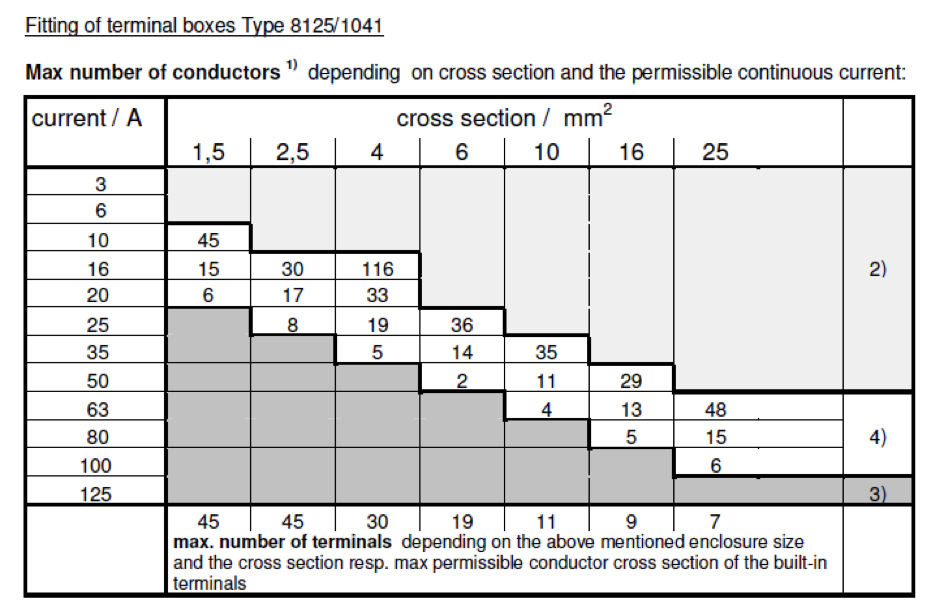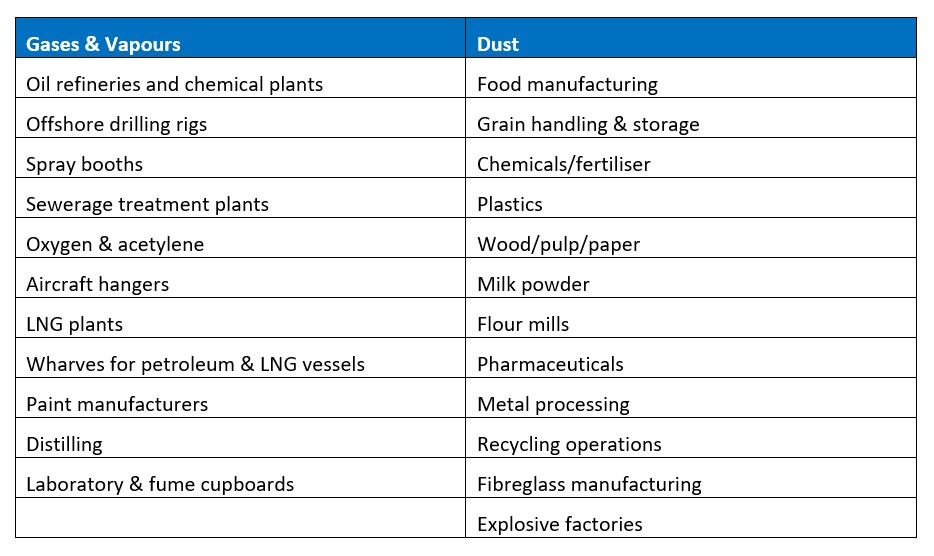Roar Solutions Fundamentals Explained
Wiki Article
What Does Roar Solutions Do?
Table of ContentsEverything about Roar Solutions6 Easy Facts About Roar Solutions ExplainedSome Known Questions About Roar Solutions.
In order to safeguard installations from a possible explosion an approach of analysing and categorizing a possibly dangerous location is required. The purpose of this is to ensure the right option and installment of devices to eventually avoid a surge and to ensure safety and security of life.
(https://www.brownbook.net/business/53579326/roar-solutions/)
No equipment must be set up where the surface temperature of the tools is higher than the ignition temperature level of the given risk. Below are some typical dirt unsafe and their minimum ignition temperature level. Coal Dust 380C 225C Polythene 420C (melts) Methyl Cellulose 420C 320C Starch 460C 435C Flour 490C 340C Sugar 490C 460C Grain Dirt 510C 300C Phenolic Material 530C > 450C Aluminium 590C > 450C PVC 700C > 450C Residue 810C 570C The possibility of the threat existing in a concentration high sufficient to cause an ignition will certainly differ from location to area.
Hazardous area electric equipment possibly developed for usage in higher ambient temperatures. Area Repair Work By Authorised Employee: Challenging testing may not be required however certain treatments may require to be adhered to in order for the devices to preserve its third party ranking. Each item of tools with a harmful ranking must be examined independently.
A Biased View of Roar Solutions
The equipment register is a detailed data source of tools records that consists of a minimum collection of areas to recognize each thing's area, technological specifications, Ex category, age, and environmental data. The proportion of Detailed to Shut examinations will certainly be established by the Tools Threat, which is analyzed based on ignition danger (the likelihood of a resource of ignition versus the possibility of a combustible environment )and the hazardous location category( Zone 0, 1, or 2). Implementing a robust Risk-Based Assessment( RBI )technique is important for ensuring conformity and security in taking care of Electric Tools in Hazardous Locations( EEHA).
5 Easy Facts About Roar Solutions Shown

In terms of eruptive risk, an unsafe location is an environment in which an eruptive ambience is existing (or might be expected to be existing) in quantities that call for special preventative measures for the building, installment and use of devices. eeha certificate. In this article we check out the obstacles faced in the office, the danger control actions, and the needed proficiencies to work securely
These compounds can, in certain problems, develop eruptive environments and these can have significant and tragic effects. Many of us are acquainted with the fire triangular remove any kind of one of the 3 elements and the fire can not happen, visit homepage however what does this mean in the context of harmful locations?
In most instances, we can do little about the degrees of oxygen in the air, however we can have significant influence on resources of ignition, for instance electric tools. Unsafe areas are recorded on the dangerous location category drawing and are identified on-site by the triangular "EX-SPOUSE" indicator. Below, among various other vital details, areas are divided into three types depending upon the threat, the likelihood and duration that an explosive ambience will certainly exist; Area 0 or 20 is deemed one of the most dangerous and Area 2 or 22 is considered the least.
Report this wiki page